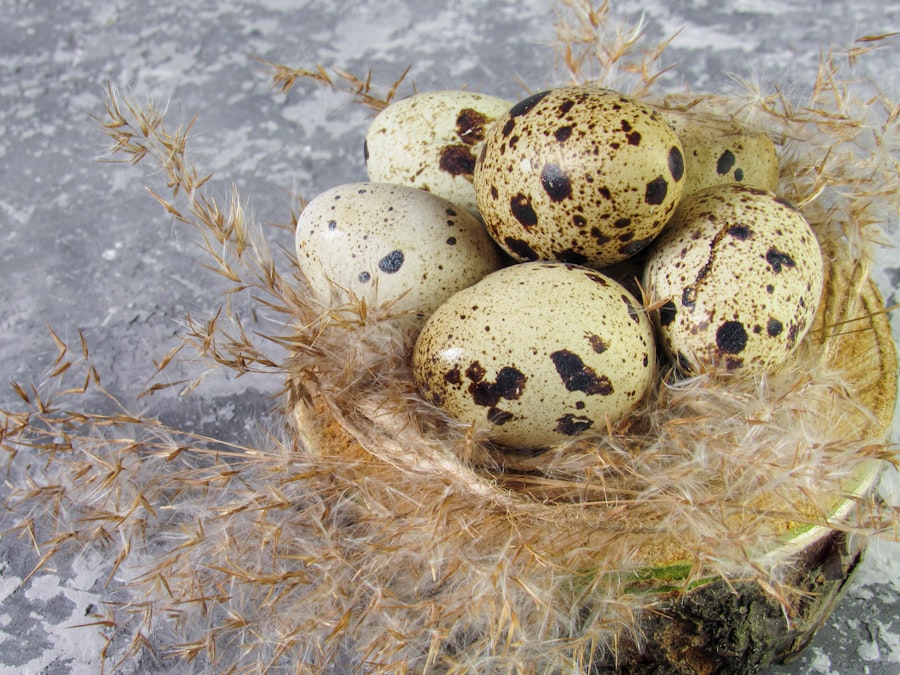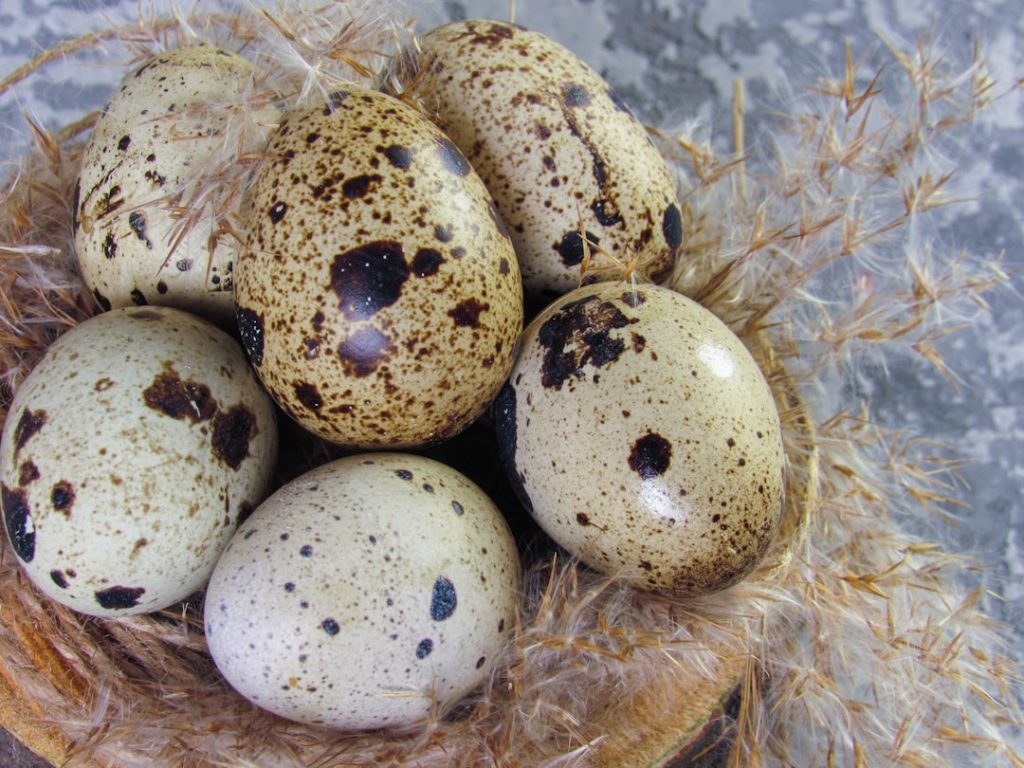Quail breeding is a rewarding and profitable venture for many farmers and hobbyists. Quails are small, ground-dwelling birds that are known for their delicious eggs and meat. They are relatively easy to care for and can be raised in small spaces, making them an ideal choice for those with limited land or resources. Quail breeding can be a lucrative business, as there is a high demand for quail eggs and meat in the market. Additionally, quails are prolific layers, with some breeds laying up to 300 eggs per year. This makes them a valuable addition to any farm or homestead.
Quail breeding can also be a fulfilling hobby for those who enjoy working with animals and watching them grow. Quails are interesting and unique birds, with their distinctive calls and social behaviors. Breeding quails can provide a sense of satisfaction and accomplishment as you watch your flock grow and thrive. Whether you are looking to start a small-scale quail breeding operation or simply want to raise quails for personal consumption, understanding the basics of quail breeding is essential for success.
Table of Contents
- 1 Selecting the Right Quail Breed
- 2 Setting Up a Quail Breeding Environment
- 3 Quail Breeding Techniques
- 4 Caring for Quail Chicks
- 5 Health and Disease Management in Quail Breeding
- 6 Selling and Marketing Quail and Quail Products
- 7 FAQs
- 7.1 What is quail breeding?
- 7.2 What are the different types of quails that can be bred?
- 7.3 What are the basic requirements for breeding quails?
- 7.4 What is the breeding season for quails?
- 7.5 How do quails mate and reproduce?
- 7.6 What are some common challenges in breeding quails?
- 7.7 What are the benefits of breeding quails?
Key Takeaways
- Quail breeding is a rewarding and profitable venture that requires careful planning and management.
- When selecting the right quail breed, consider factors such as egg production, meat quality, and adaptability to your local climate.
- Setting up a quail breeding environment involves providing adequate space, proper ventilation, and suitable nesting areas.
- Quail breeding techniques include natural mating, artificial insemination, and proper egg handling and incubation.
- Caring for quail chicks involves providing a balanced diet, warmth, and protection from predators.
- Health and disease management in quail breeding requires regular monitoring, vaccination, and proper sanitation practices.
- Selling and marketing quail and quail products can be done through local markets, online platforms, and direct sales to restaurants and consumers.
Selecting the Right Quail Breed
When it comes to quail breeding, selecting the right breed is crucial for success. There are several different breeds of quail, each with its own unique characteristics and traits. The most common quail breeds for breeding purposes include the Coturnix quail, Bobwhite quail, and California quail. Each breed has its own advantages and disadvantages, so it’s important to carefully consider your goals and resources before choosing a breed.
Coturnix quail, also known as Japanese quail, are the most popular breed for commercial quail farming due to their high egg production and fast growth rate. They are relatively small in size and come in a variety of colors, making them an attractive choice for hobbyists as well. Bobwhite quail are native to North America and are known for their flavorful meat. They are also popular for hunting purposes, making them a good choice for those looking to diversify their quail breeding operation. California quail, on the other hand, are known for their striking appearance and adaptability to different environments. They are a good choice for those looking to raise quails for ornamental purposes.
Before selecting a quail breed, consider factors such as your available space, climate, and intended purpose for raising quails. It’s also important to source your quail from reputable breeders to ensure the health and quality of your flock.
Setting Up a Quail Breeding Environment
Creating the right environment for your quails is essential for their health and productivity. Quails are relatively low-maintenance birds, but they do have specific requirements when it comes to housing and living conditions. When setting up a quail breeding environment, there are several key factors to consider, including housing, bedding, lighting, and ventilation.
Quails can be housed in a variety of structures, including cages, aviaries, or coops. The type of housing you choose will depend on the size of your flock and your available space. Regardless of the housing type, it’s important to provide enough space for your quails to move around comfortably and engage in natural behaviors such as dust bathing and foraging. Additionally, providing proper bedding such as wood shavings or straw will help keep your quails clean and comfortable.
Proper lighting is also crucial for quail breeding success. Quails require a consistent light cycle to stimulate egg production, so it’s important to provide them with 14-16 hours of light per day. This can be achieved using natural sunlight or artificial lighting in their housing area. Adequate ventilation is also important to prevent respiratory issues and maintain air quality within the quail breeding environment.
Quail Breeding Techniques
Quail breeding techniques vary depending on the breed and purpose of raising quails. For those looking to breed quails for egg production, it’s important to provide a balanced diet that includes high-quality commercial feed supplemented with calcium and protein sources. This will ensure that your quails have the nutrients they need to lay healthy eggs consistently.
Breeding quails for meat production requires a different approach. Providing a high-protein diet and ample space for exercise will help promote healthy growth and development in meat-producing quails. Additionally, selective breeding can be used to improve meat quality and yield in your flock.
When it comes to breeding practices, it’s important to maintain proper male-to-female ratios to prevent aggression and ensure successful mating. Generally, a ratio of one male to every three to five females is recommended. It’s also important to monitor your quails for signs of stress or illness and provide appropriate care as needed.
For those looking to breed quails for ornamental purposes, selective breeding for specific color patterns or traits can be an enjoyable and rewarding process. This involves carefully choosing breeding pairs based on desired traits and characteristics to produce offspring with the desired appearance.
Caring for Quail Chicks
Caring for quail chicks requires attention to detail and proper management to ensure their health and well-being. Quail chicks are delicate and require specific care during the first few weeks of life. Providing a warm and draft-free brooding area is essential for the survival of quail chicks. This can be achieved using a brooder lamp or heating pad to maintain a temperature of around 95-100°F during the first week, gradually decreasing by 5°F each week until they are fully feathered.
In addition to providing warmth, it’s important to offer a balanced diet that meets the nutritional needs of growing quail chicks. Commercial chick starter feed with at least 24% protein is recommended for optimal growth and development. It’s also important to provide clean water at all times, using shallow dishes or special chick waterers to prevent drowning.
Monitoring the health of quail chicks is crucial during the early stages of life. Keeping an eye out for signs of illness or distress such as lethargy, huddling, or abnormal droppings can help identify and address health issues promptly. Additionally, providing a clean and comfortable living environment will help prevent common issues such as coccidiosis and respiratory infections.
As quail chicks grow, they will eventually transition to adult feed and can be integrated into the main flock once they are fully feathered and able to regulate their body temperature effectively.
Health and Disease Management in Quail Breeding

Maintaining the health of your quail flock is essential for successful breeding and productivity. Preventative measures such as proper nutrition, hygiene, and biosecurity practices can help minimize the risk of disease outbreaks in your quail breeding operation.
Providing a balanced diet that meets the nutritional needs of your quails is crucial for maintaining their overall health and immune function. Additionally, ensuring access to clean water at all times will help prevent dehydration and promote proper digestion.
Maintaining a clean living environment is also important for disease prevention in quail breeding. Regularly cleaning and disinfecting housing areas, feeders, and waterers can help reduce the risk of bacterial and parasitic infections. Additionally, practicing good biosecurity measures such as limiting visitor access and quarantining new birds before introducing them to the main flock can help prevent the spread of diseases.
Despite preventative measures, it’s important to be vigilant for signs of illness in your quails. Common health issues in quails include respiratory infections, coccidiosis, and egg binding in females. Monitoring your flock regularly for signs of illness such as lethargy, decreased appetite, or abnormal droppings can help identify health issues early on.
In the event of illness or disease outbreak, seeking veterinary care and implementing appropriate treatment measures promptly is essential for minimizing the impact on your quail flock.
Selling and Marketing Quail and Quail Products
Once you have successfully bred quails and have a surplus of eggs or meat, selling and marketing your products is an important aspect of quail breeding. There is a growing demand for quail eggs and meat due to their nutritional value and unique flavor, making them a valuable commodity in the market.
When it comes to selling quail eggs, targeting local markets such as farmers’ markets, specialty grocery stores, or restaurants can be a lucrative option. Quail eggs are prized for their small size, delicate flavor, and high nutritional value, making them popular among food enthusiasts and chefs alike.
Selling quail meat can also be profitable, especially if you have bred meat-producing quails such as Bobwhite or Coturnix breeds. Marketing your quail meat as a gourmet or specialty product can help differentiate it from traditional poultry products in the market.
In addition to selling eggs and meat, there is also a demand for live quails for ornamental purposes or backyard farming. Selling live birds can be an option for those looking to diversify their revenue streams from their quail breeding operation.
When marketing your quail products, it’s important to highlight their unique qualities such as small size, rich flavor, and high nutritional value. Utilizing social media platforms, creating a website, or participating in local food events can help raise awareness about your quail products and attract potential customers.
Overall, understanding the basics of selling and marketing quail products can help maximize the profitability of your quail breeding venture while meeting the demand for high-quality quail eggs, meat, or live birds in the market.
By effectively promoting the unique qualities of quail products, such as their nutritional value, small ecological footprint, and versatility in cooking, you can attract a wider customer base and differentiate your products from others in the market. Additionally, utilizing various marketing channels such as social media, farmers’ markets, and local restaurants can help increase visibility and sales. Building strong relationships with potential buyers and consistently delivering high-quality products will also contribute to the success of your quail breeding business.
If you’re interested in breeding quails, you might also want to consider the housing options for your birds. A well-designed chicken coop can also be suitable for quails, providing them with a safe and comfortable environment to thrive. For more information on creating the perfect coop for your quails, check out this article on large chicken coop ideas. It offers valuable insights and tips that can be applied to housing quails as well.
FAQs
What is quail breeding?
Quail breeding refers to the process of raising and mating quails in order to produce offspring for various purposes such as meat, eggs, or as pets.
What are the different types of quails that can be bred?
There are several species of quails that can be bred, including the Coturnix quail (also known as Japanese quail), Bobwhite quail, Gambel’s quail, and California quail.
What are the basic requirements for breeding quails?
The basic requirements for breeding quails include a suitable breeding environment, proper nutrition, adequate space, and appropriate mating ratios.
What is the breeding season for quails?
The breeding season for quails typically occurs in the spring and summer months, although some species may breed year-round in captivity.
How do quails mate and reproduce?
Quails mate through a process of courtship behavior, where the male will display to the female by puffing up his feathers and making vocalizations. Once the female accepts the male, they will mate and the female will lay eggs, which can be incubated for hatching.
What are some common challenges in breeding quails?
Common challenges in breeding quails include maintaining proper environmental conditions, preventing diseases, managing aggression among males, and ensuring successful incubation of eggs.
What are the benefits of breeding quails?
Breeding quails can provide a sustainable source of meat and eggs, as well as opportunities for hobbyists to engage in animal husbandry and conservation efforts for certain quail species.
Meet Walter, the feathered-friend fanatic of Florida! Nestled in the sunshine state, Walter struts through life with his feathered companions, clucking his way to happiness. With a coop that’s fancier than a five-star hotel, he’s the Don Juan of the chicken world. When he’s not teaching his hens to do the cha-cha, you’ll find him in a heated debate with his prized rooster, Sir Clucks-a-Lot. Walter’s poultry passion is no yolk; he’s the sunny-side-up guy you never knew you needed in your flock of friends!







